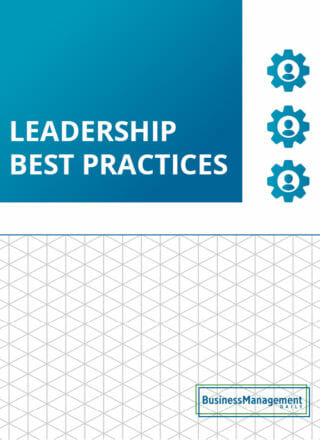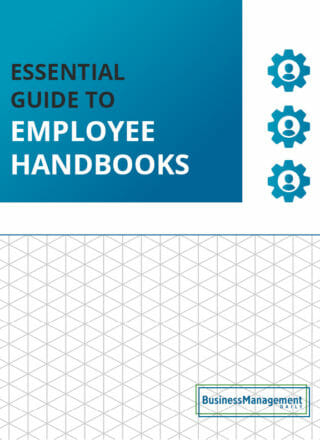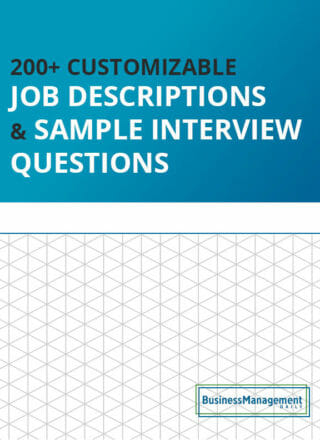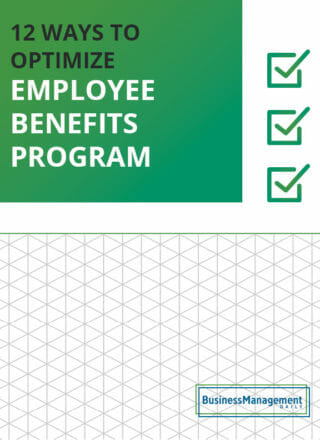Behavioral interview questions and answers
Common behavioral questions & how to respond (By skill)
“Can you give me an example of a time when you demonstrated strong communication skills?”
This question likely triggered flashbacks to your most recent job interview, as it’s an extremely common question to ask when interviewing for practically any type of position.
It’s also an example of a behavioral interview question, which examines a candidate’s past experiences to determine their future behavior.
For interviewers, behavioral interview questions are an effective way to determine a candidate’s soft skills.
These general skills, such as communication, adaptability, problem-solving, and leadership, can be applied to any job.
Career Builder research found that 75% of leaders rely on behavioral interviews to assess their candidates’ soft skills.
Common behavioral questions are open-ended and begin with phrases like, “Give me an example of a time when” or “Describe a situation where you demonstrated leadership for your team.”
These types of questions encourage candidates to share specific situations from the past where they used their soft skills to find success (or solve a problem).
Yet, the actions of the past aren’t always reliable predictors of the future.
For this reason, interviewers must know when and in what context to use behavioral interview questions.
In this article, I’ll break down some common behavioral interview questions, including the best scenarios to use them, so stick around to learn more.
What are the characteristics of behavioral interview questions?
The concept behind behavioral interviewing is simple: you examine a candidate’s past behavior to predict their future performance.
Most of the time, candidates share experiences from previous roles where they exhibited specific skills or attributes, such as teamwork or problem-solving skills.
The key characteristics of behavioral-based interview questions are:
A heavy emphasis on experiences from previous jobs
Behavioral interview questions aim to get candidates to open up about their past work experiences and share instances where they demonstrated the skills you’re looking for in a particular position.
For example, when hiring a team leader, you may ask a candidate to share an instance where they made a difficult decision to overcome a stressful situation. This exemplifies that the candidate can keep a cool head during challenging situations, an essential characteristic of a leader.
Focusing on actions and results
Vague responses won’t work for behavior-based interview questions. Instead, candidates must share real-world experiences in which they took action and achieved positive outcomes.
Rather than receiving vague responses like, “Yeah, I’ve done that before,” these questions hope to elicit detailed responses that showcase the candidate’s ability to overcome specific challenges (like writers meeting tight deadlines).
Asking open-ended questions
From an interviewing perspective, you must design your behavioral interview questions to be open-ended. Otherwise, candidates can get away with a simple “yes” or “no” to your queries, which aren’t specific enough.
For instance, you wouldn’t want to ask, “Do you have experience with decision-making?“
A candidate could answer this question with a yes or a no, which isn’t what you want.
To make the question open-ended, you could ask, “Tell me about a time when you used your decision-making skills to complete an important project.” Now, the candidate has no choice but to provide a detailed answer.
Uncovering specific skills and thought processes
Ultimately, you want your candidates to share specific examples demonstrating their proficiency with certain skills. If you’re looking for a tenacious leader who can quickly solve problems, you should develop open-ended questions centered around leadership and problem-solving.
An example question would be, “Can you share a time in a previous role when your leadership and problem-solving skills drove positive outcomes for your team?”
That should get the candidate to open up about their leadership experience at their last job, which is what you want them to do.
Unpacking the STAR method: How to respond to behavioral interview questions
On the candidate side, knowing how to respond to behavior-based interview questions properly is crucial, as they’re an extremely prevalent part of the interview process.
As shared previously, 75% of organizations rely on these interview questions to assess candidates’ soft skills, so the chances are high that you’ll encounter them during your next job interview.
The best way to handle answering behavioral interview questions is to use the STAR method.
What’s that?
It’s an acronym that perfectly formats responses for behavior-based interview questions. Here’s what each letter stands for:
- Situation. First, briefly explain the situation you’re describing so that the interviewer understands the context. Most of the time, this involves reiterating the first part of the interviewer’s question. For example, you’re asked, “Can you share a time when you demonstrated conflict resolution skills?” In this instance, you could respond, “I demonstrated my conflict resolution skills (reiteration) when two co-workers were arguing over working extra hours.”
- Task. Next, describe the problem you had to solve using your skills. Sticking with the same example above, the task was resolving the team members’ conflict over overtime. It’s crucial to mention the challenge you overcame so that the interviewers know your skills can solve real-world issues.
- Action. By now, you’ve stated the context and the problem but haven’t mentioned how you solved it yet. That’s what the A in the STAR method is for: describing the actions you took to resolve an issue. In our fictional scenario, you could mention that you had one-on-one check-ins with each employee to understand their concerns. You explained that being part of a team is about occasionally working long hours, especially when someone is out of the office.
- Result. Lastly, you need to mention the positive outcomes you achieved with your skills. You should highlight measurable results first, although mentioning second-hand benefits (like saying that your team members had a learning experience) is acceptable. Sharing the results will round out your answer and demonstrate to the recruiter or hiring manager that your skills match those in the job description.
Putting the STAR method into practice
Okay, now that you know what the acronym stands for, let’s try a sample response.
We’ll keep the interview question, “Can you share a time when you demonstrated effective conflict resolution skills?
- Situation: I demonstrated my conflict resolution abilities at my last job when two co-workers argued over working extra hours to cover one employee’s vacation time.
- Task: The employees were fighting over the issue, which negatively affected employee engagement and morale.
- Action: I held individual check-ins with each employee to hear their side of the story. Apparently, the other employee took lots of successive vacation time, leaving the other to cover their work while they were gone, leading to the overtime. I proposed that once the other employee’s vacation time was over, they would have to cover vacation time for them to make things fair.
- Result. The two employees agreed to the condition, and the second employee also took a lengthy vacation once the first employee returned. Both workers could enjoy their vacation time and earn extra money by working overtime, which was a win-win.
As you can see, the STAR method provides a succinct way to phrase responses to behavioral interview questions. Essentially, you’re telling a complete story with a beginning, middle, and end (complete with a conflict and resolution).
How to utilize and respond to common behavioral interview questions
Let’s examine some specific examples of behavioral interview questions so that you can learn how to use them in your job interviews.
I’ll also cover some ways to respond to these questions (using the STAR method), so job seekers can benefit from the information. To stay organized, I’ve grouped the questions according to the soft skills they examine.
Time management questions:
1. Can you recall when your time management skills led to positive outcomes?
Sample answer: My time management skills helped our team succeed when we inherited a project from another way overdue team (Situation). Our stakeholders needed results pronto (Task), so I immediately put together an organized action plan that enabled us to complete the project within five days (Action), which was three days faster than anticipated (Results).
2. Was there a time when being organized helped you achieve a last-minute project?
Sample answer: Yes, in my past role, I helped us complete last-minute projects many times (Situation). In particular, we had a fast-approaching deadline for a video piece to be posted on our social media profiles (Task). I had already saved my go-to script templates and editing preferences (Action) so we could shoot the video that same day (Results).
Problem-solving questions
1. Tell us about a time when a serious problem affected your organization. How did you solve it?
Sample answer: Last year, we cut half our team due to budgeting issues (Situation). As a result, we had a ton of open spots for senior software engineers (Task). Hiring new employees takes time and money, so I implemented a promote-from-within strategy (Action) that filled the positions within two months (Results).
2. Was there an instance where you could solve a significant problem for your business?
Sample answer: Yes. Two months ago, we had trouble with our employee engagement levels (Situation). Our staff was unmotivated, bringing our productivity down (Task). I heavily emphasized mental health to get the pep back into our team’s steps. Employees were able to take extended breaks and had the option to work hybrid schedules (Action). Within three months, our engagement and productivity levels were skyrocketing (Results).
Communication skills questions
1. How has your communication style contributed to your past successes at work?
Sample answer: As a communicator, I’m very open with my staff, contributing to many successes (Situation). In one instance, a project was falling far behind due to communication issues (Task). After doing some digging, I discovered that the team was only using one communication channel (Slack). After incorporating email and phone calls into the mix (Action), they got back on track and completed the project (Results).
2. Do you remember an instance where your communication skills helped your organization avoid adverse outcomes?
Sample answer: Two years ago, two co-workers struggled to get along (Situation), bringing the whole team down (Task). After following up with them both, I discovered that there was a huge misunderstanding. Once I cleared things up (Action), the employees settled their differences and became friendly again (Results).
Leadership questions
1. Can you tell us about a time when you demonstrated strong leadership skills in the past?
Sample answer: I was the team leader for a big project last May, and we weren’t getting anywhere (Situation). My team was unfocused, and the whole thing felt like a waste of time (Task). I gave them a wake-up call by holding a team meeting where I laid down the law, albeit in a very fair way (Action). As a result, my team got serious and exceeded their deadline (Results).
2. How has your leadership style contributed to your team’s success?
Sample answer: My lax leadership style (Situation) helped our organization overcome a severe burnout issue (Task). Since I was more hands-off (Action), my team was able to find success (Results).
Final thoughts: Behavioral interview questions
To summarize, behavioral interview questions are a great way to judge a candidate’s soft skills.
However, they aren’t always the best predictor of future outcomes, especially for more technical skills.
More resources:
Claim your FREE copy of 17 Team Building Ideas






